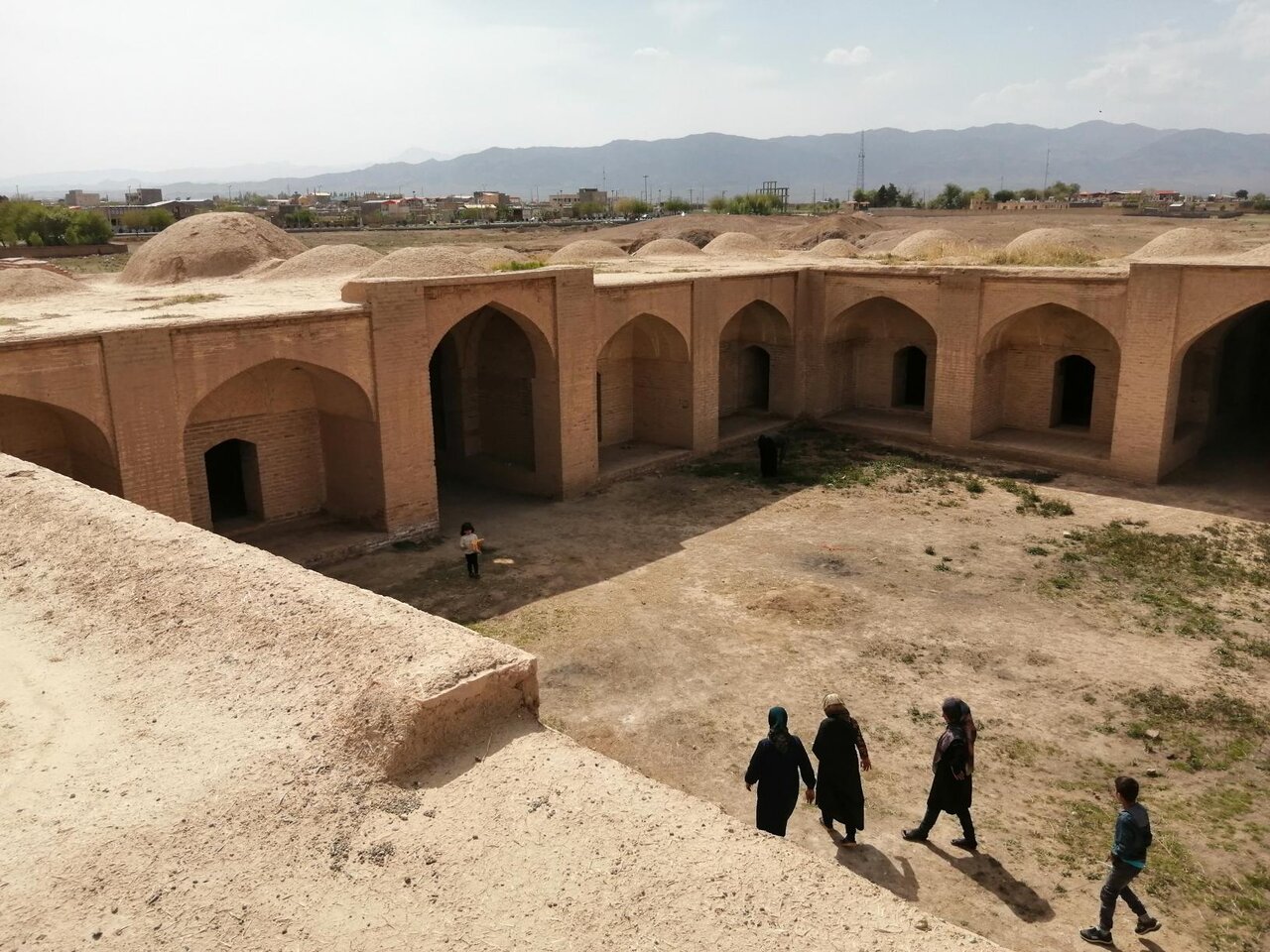17th-century caravanserai undergoes restoration

TEHRAN - The second phase of restoration work has been commenced on Aveh Caravanserai, a 17th-century monument in Saveh county of Markazi province.
“Considering the annual allocation of funds for the restoration of this historical caravanserai, 24 billion rials (some $48,000) will be spent on this restoration project this year,” the province’s deputy tourism chief said on Sunday.
The restoration of chambers, vaults, and an alcove in the northern section of this structure, which had been damaged, has been completed (in the previous restoration work), and now, work has commenced on the vaults of turrets and the porch in the western section, Hossein Mahmoudi stated.
“The Safavid monument enjoys a symmetrical plan of four iwans, representing the classic form of a caravanserai. It consists of various sections, including the central courtyard, entrance, iwans, chambers, and stables.
For long, Iranian caravanserais have been a testimony to the rich circuits of traveling and trade in ancient Iran, providing shelter, food, and water for caravans, pilgrims, and other trekkers.
Caravanserai, derived from the compound of "caravan" and "sara," symbolized a haven for groups of travelers. These structures typically boasted massive portals supported by sturdy walls, with guest rooms encircling a central courtyard and stables tucked behind them, often accessible through yard corners.
While traversing major roads in Iran, one might encounter dilapidated caravanserais, many of which have remained abandoned for centuries. In the modern Information Age, these guest houses have lost much of their original function.
Staying at or merely visiting a centuries-old caravanserai can be a profound experience for visitors to Iran, offering a glimpse into the past and a journey back in time. Imaginations can easily conjure images of bustling merchants haggling overprices and sharing tales of their arduous journeys while their camels leisurely chew on hay!
The earliest caravanserais in Iran trace back to the Achaemenid era (550 - 330 BC). Centuries later, during the reign of Shah Abbas I from 1588 to 1629, he initiated the construction of a network of caravanserais across the country. These roadside inns once lined ancient caravan routes across the Muslim world, providing refuge for travelers, their commodities, and animals. Among the most renowned routes is the former Silk Road, marked by various caravanserais.
Earlier this year, a selection of 54 centuries-old roadside inns won a UNESCO label under the name: The Persian Caravanserai. The registration was made at the 45th session of the UNESCO World Heritage Committee in Saudi Arabia’s capital Riyadh, after carefully examining the proposed caravanserais located in 24 provinces across the country.
AFM
